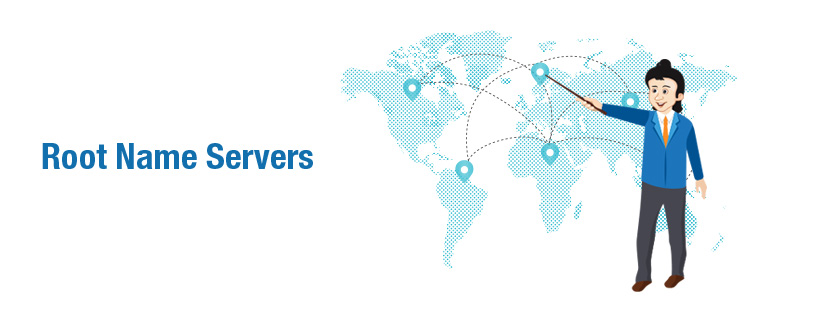Published on: May 25, 2010 by Arnold Pablo

Scenario:
The process involved in the resolution of a Domain Name to IP is a very complex one when comparing to the time it takes to do that. We type name of the website into the browser, gets converted to IP and there we have it ! All of it just happens in a fraction of a second. This document is intended for all those who would like to know the processes happening in this split time. The explanation of this process would be incomplete if I do not brief you about ROOT NAME SERVERS which are at the top of the DNS tree.
The Operators
Root name servers are operated by twelve organisations often referred to as the “root server operators”. They are
A – VeriSign Global Registry Services
B – Information Sciences Institute
C – Cogent Communications
D – University of Maryland
E – NASA Ames Research Center
F – Internet Systems Consortium, Inc.
G – U.S. DOD Network Information Center
H – U.S. Army Research Lab
I – Autonomica/NORDUnet
J – VeriSign Global Registry Services
K – RIPE NCC
L – ICANN
M – WIDE Project
The letters A-M represent the 13 numeric IPv4 addresses at which the service is provided. These 13 IPs correspond to servers located at about 130 physical location around the globe in about 53 countries. These servers contain a file called ‘root.zone’ which makes them special. The root zone file lists the names and numeric IP addresses of the authoritative DNS servers for all top-level domains (TLDs) such as ORG, COM, NL and AU. There are currently 13 root-servers ( to be more specific, 13 IPs . The number of individual machines mapped with these IPs are more than 150 !)worldwide, described in further detail later in this chapter. The IPs of root-servers are known to every name server in the world using a special zone file, which is distributed with all DNS software.
Below is the general implementation of the DNS and position of the root servers :
The black spots denote authoritative NS (name servers) for the domains beside them.
The Purpose
Each domain name in the Internet name space will have at the least 1 authoritative NS associated with it (the accepted convention is to have at least 2). This name server will be the one which helps to resolve this domain and the and the domains under it ( sub-domains, add-on and parked ) to an IP. It does it by having a “Zone File” of the particular domain. In the Zone File will be an entry called the A Record which maps the domain name to an IP ( a much more detailed explanation on this resolution process will be dealt with in PART II of this document ) . So when we type in a domain into the web w browser, it will be resolved to an IP only if the query from our machine reaches the authoritative name server. But how does this query reach the correct name server ? This is where the Root name Servers come into play. But as I mentioned, these servers are not contacted every time IP for a domain is queried. There are some mechanisms called “Caching” which helps to store the NS of a domain once it is queried for the first time.
You may find the root servers locations from this site :
http://public-root.com/root-server-locations.htm
It is a good one!
Category : Linux, Training

Add new commentSIGN IN